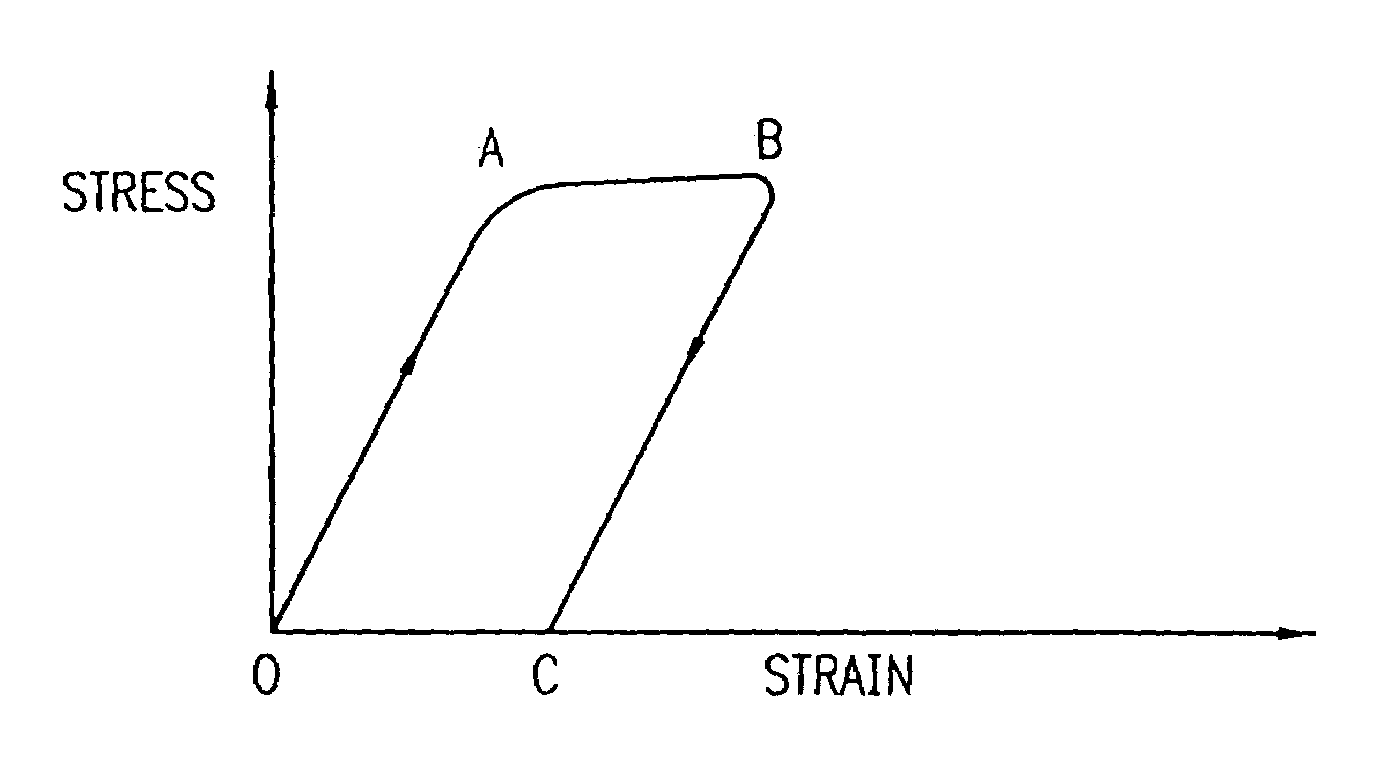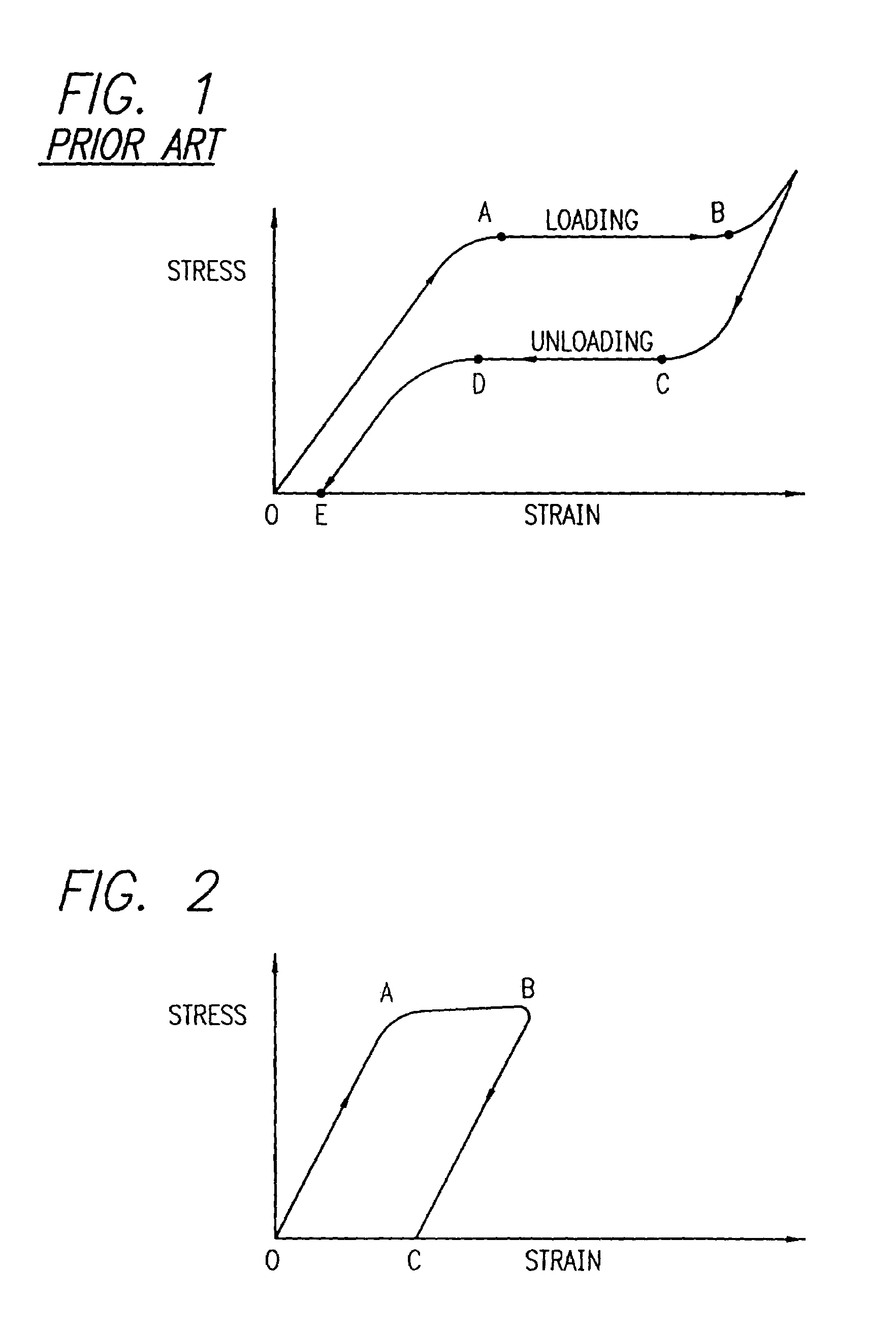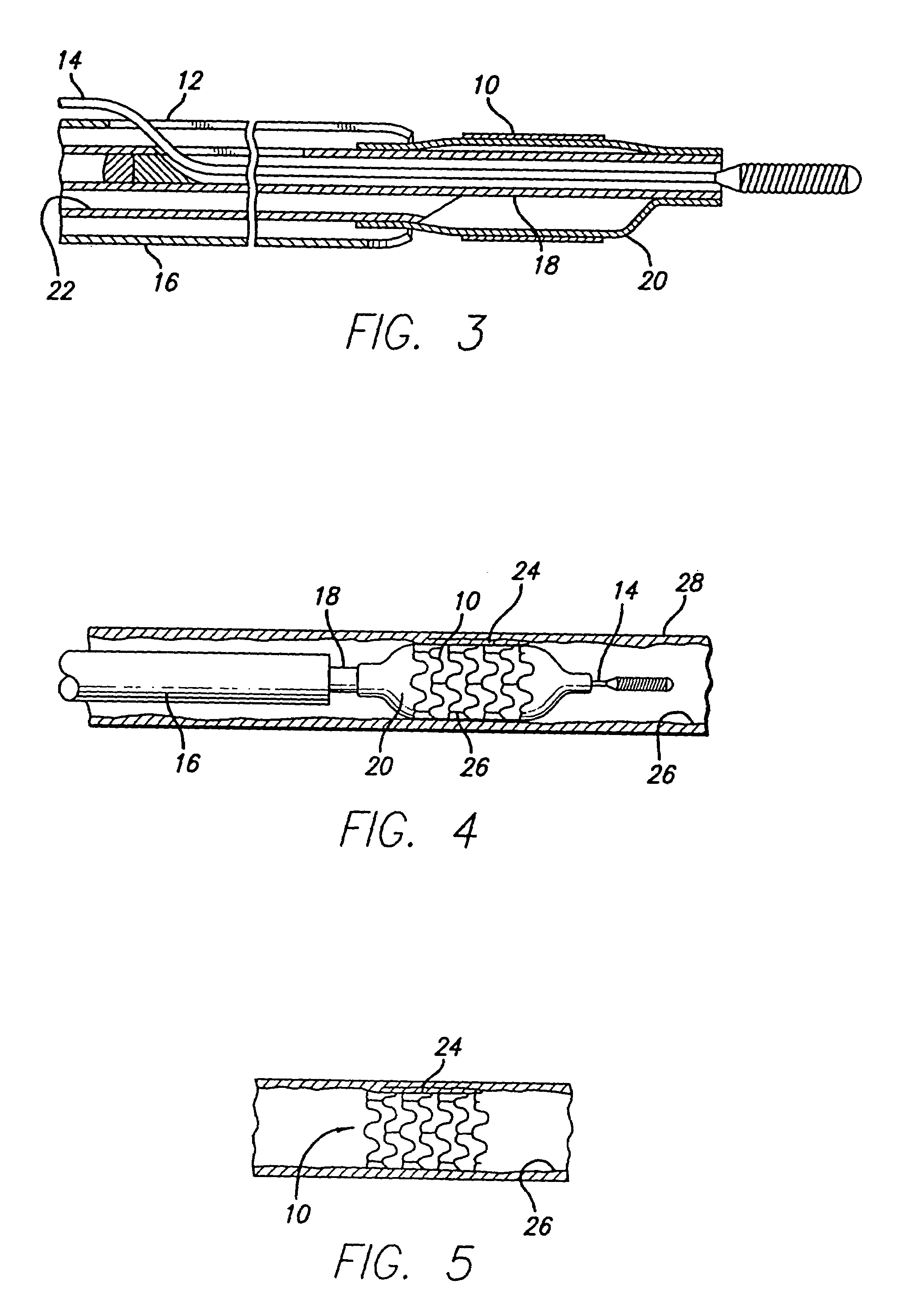Austenitic nitinol medical devices
a technology of austenitic nitinol and medical devices, which is applied in the field of medical devices, can solve the problems of not being able to stress-induce martensite in the device at body temperature, and achieve the effects of reducing the strength of the radial hoop, and reducing the risk of fractur
- Summary
- Abstract
- Description
- Claims
- Application Information
AI Technical Summary
Benefits of technology
Problems solved by technology
Method used
Image
Examples
Embodiment Construction
[0026]The present invention is directed to an austenitic medical device made of preferably a binary alloy such as nickel-titanium or nitinol. By way of illustration, the following exemplary embodiments are limited to intraluminal stents. However, it is recognized that the present invention is not limited to such applications but also contemplates use in various other medical devices including, for example, guide wires, vena cava filters, surgical staples, aneurysm clips, bone screws, etc. where the same principles apply.
[0027]FIG. 1 is a commonly understood stress-strain curve for a binary nickel-titanium alloy showing loading and unloading of the metal alloy. Industry literature provide more detailed discussions of nickel-titanium behavior. An example of such includes T. W. Duerig, A R. Pelton, “Ti—Ni Shape Memory Alloys, Materials Properties Handbook Titanium Alloys,” pp. 1035–1048, ASM International (1994), the contents of which are incorporated by reference. The curve illustrate...
PUM
| Property | Measurement | Unit |
|---|---|---|
| Angle | aaaaa | aaaaa |
| Percent by atom | aaaaa | aaaaa |
| Percent by atom | aaaaa | aaaaa |
Abstract
Description
Claims
Application Information
 Login to View More
Login to View More - R&D
- Intellectual Property
- Life Sciences
- Materials
- Tech Scout
- Unparalleled Data Quality
- Higher Quality Content
- 60% Fewer Hallucinations
Browse by: Latest US Patents, China's latest patents, Technical Efficacy Thesaurus, Application Domain, Technology Topic, Popular Technical Reports.
© 2025 PatSnap. All rights reserved.Legal|Privacy policy|Modern Slavery Act Transparency Statement|Sitemap|About US| Contact US: help@patsnap.com



